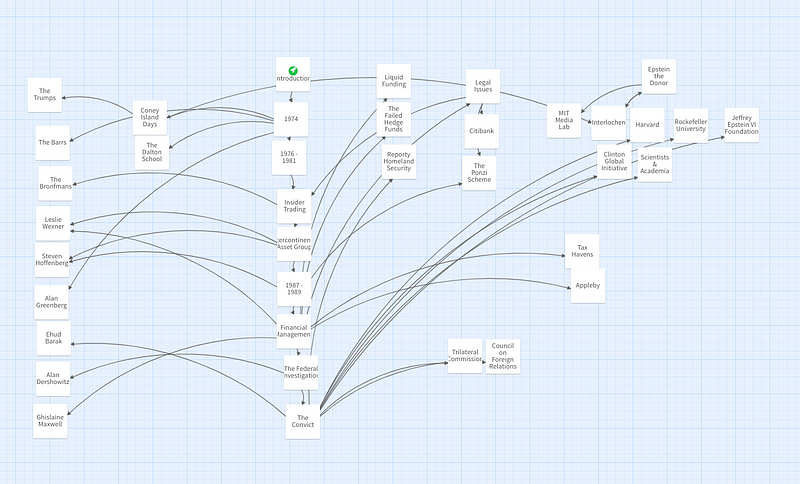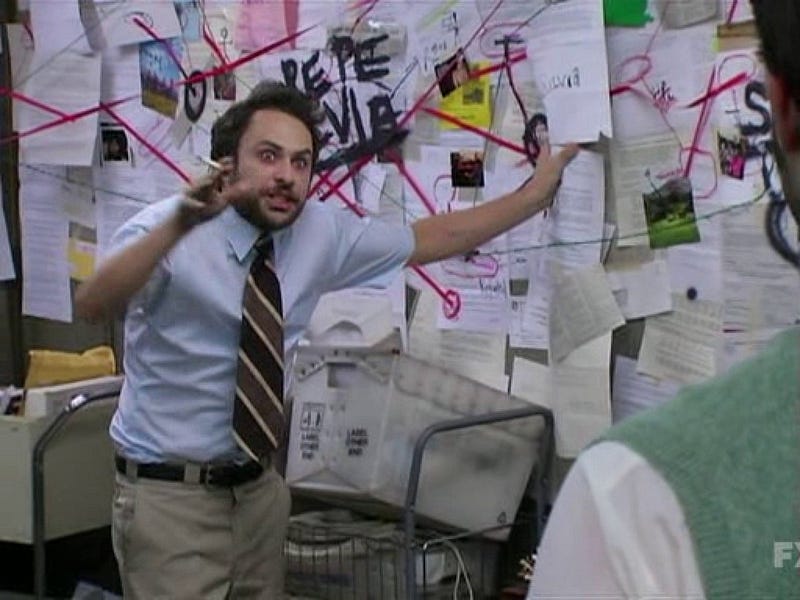Twine Prototype: Black Book

You can play the prototype here — be warned, it’s very much in prototype stage: some stages are empty, and along the main story thread it devolves into notes as it gets further along.
Something that’s been on my mind (and a whole lot of other people’s minds) lately is the case of Jeffrey Epstein. Presumably, most people reading this know him as the pedophile billionaire whose death spawned a million conspiracy theories. While the crimes that led to his arrest and the circumstances surrounding his death are deeply upsetting and important to examine, something that’s often lost when discussing his case is just how wide and deep his ties went. Epstein’s money went a lot of places, and he counted many of the rich and famous among his friends and collaborators. He did not act alone, and his continued existence as a member of polite society — and his continued predatory behavior — were enabled and indeed encouraged by plenty of others who, one hopes, knew better. As a putative creative technologist, this struck especially close to home when it was revealed that MIT Media Lab, considered by many to be the gold standard in our field, had taken donations from Epstein for years, leading to director Joichi Ito’s resignation.
I’ve been aware of Epstein’s frighteningly wide sphere of influence since Gawker, since deceased at the hands of another billionaire, published the flight logs of his plane, often referred to as the Lolita Express. Though peeps and murmurs about this were heard in the years between his “sweetheart deal” after his first conviction for soliciting underage prostitution in 2008 and his arrest and eventual death earlier this year, he was largely allowed to continue in his pre-conviction lifestyle for over a decade. This was immensely frustrating to watch.
Thankfully, in 2018, the Miami Herald published a series of investigations into Epstein’s case. After the renewed attention, he was arrested once again. Finally, it seemed, the attention this case deserved would be paid. But then, in August, Epstein was found dead in an apparent suicide in his jail cell.
I am afraid that the public eye, so quickly distracted, has already moved on from this case. I am afraid that the vast majority who are aware of the case are unaware of exactly how far Epstein’s influence ranged. I am afraid that, as is so often the case, the rich and powerful are going to be let off the hook, allowed to be complicit in unspeakable crimes, because that’s just the way things go. I am afraid that the practice of artwashing — sponsoring the arts, or the sciences, or anything else not essential to the churn of capital as a way of deflecting criticism — will continue to go unexamined, and the other Joichi Itos of the world will continue to rake in blood money.
I don’t really think I can stop this process, but I’ve been wanting to put something out there that puts all the information in one place — lays clear the nodes of power and influence around this headline-grabbing case.
This is going to take a while to get together, and probably take a couple different shapes before it gets done, but I thought I’d start by prototyping in Twine, since its basic node structure mirrors how I mentally envision this work.

Initial Process
I decided that my goals for this project were to explore:
- Epstein’s relationships with other rich and powerful people.
- Epstein’s financial and philanthropic activities.
While his crimes against women and girls cannot go ignored in any work, these have been widely reported and investigated. My goal, rather than diving into the details of his crimes, is to show his activities and influence in the broader world — especially after his conviction. While I’m interested in Epstein himself, my goal is, rather than focusing on the man himself, to focus on exposing the structures that enabled him to reach the position that he did.
So my first job was to research, and that I did. This took up a lot of time, and prevented me from focusing as much on the structure of the Twine as I would have liked. You can find a list of sources and my notes here.
From my research, two possible structures for a Twine became clear.
- Starting from the black book: a central list of his associates, opening up to nodes explaining their relationships.
- Starting chronologically: going through a timeline of Epstein’s career, branching off into nodes for separate incidents, people, etc.
Since Twine seems more native to a narrative structure, I decided to build my Twine from 2.
The Twine
It’s still very much a work in progress — plenty of nodes are empty — but I treated this more as an exercise in mapping out the structure of the story I want to tell rather than making a playable prototype. Roughly, it’s grouped into four sections around the central timeline, some more fleshed out than others. There are a few smaller sections I’m still trying to sort out.
- Relationships
- Businesses
- Legal issues
- Philanthropy
Reflections
This was a nice start, but even as a prototype it still needs some work. You’ll see from my research plenty of nodes that haven’t even made it onto the Twine yet, and within the Twine itself plenty of nodes are empty.
More than that, I’m still trying to determine the best structure for this. Am I telling a story, and if I am, what structure should it take?
What are the best methods for keeping track of this information, and making it digestible? Right now it feels a bit more like a wiki than something compelling, and I’d like this to be something people want to make their way through. I’d like to add visual components, and more thorough state tracking, and I’m not sure if continuing to use Twine is the best method or if I should switch to something more conducive to data visualization and more elaborate state. There’s plenty to figure out. However, this has been a useful start at least in terms of thinking about structure, and a good opportunity to both do some more serious research and build out a map of where the story can go.